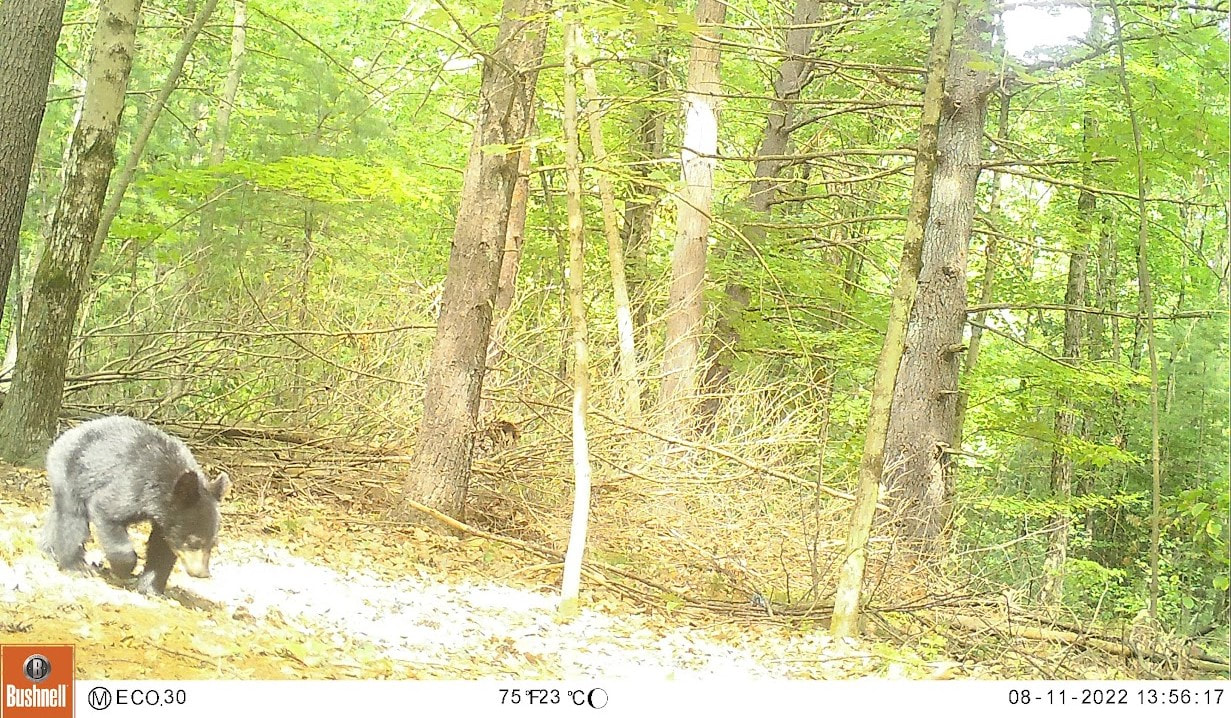The Friends of Wildwood Cemetery encourages the public and schools in the surrounding area to consider our beautiful grounds as an outdoor classroom. Wildwood's eighty acres are the perfect place to learn about history, anthropology, geology, ecology, and conservation. All studies and activities are respectful of the graves, funerals and cemetery visitors. The following studies are being done by two different UMass departments and utilize the undeveloped part of Wildwood's woods. Please read the project descriptions below and enjoy the links.
If you have a project idea please contact the cemetery office and the General Manager will be happy to talk to you.
If you have a project idea please contact the cemetery office and the General Manager will be happy to talk to you.
|
The UMass Amherst Wildlife Project
This project is an undergraduate-driven research study that aims to monitor levels of species diversity and patterns of habitat use for local populations of wildlife species inhabiting a mix of urban, suburban, and conservation lands across the Town of Amherst in western Massachusetts. Using photo detection data collected at 41 trail cameras during 2017-2022, this project provides research experience for students enrolled in Natural Resource Conservation courses within the Department of Environmental Conservation. In addition to revisiting trail cameras to collect data, undergraduate students help to identify wildlife species in the photos, analyze the data based on their own hypotheses, and engage in outreach efforts on campus as well as through our website: https://amherstwildlife.weebly.com/ Contact information: Kelly B. Klingler, Ph.D. (she/her) - Lecturer, Faculty Advisor Natural Resources Conservation Department of Environmental Conservation 160 Holdsworth Way University of Massachusetts |
Check out the animal highlights from the past few years here: https://photos.app.goo.gl/cMuD2ZPsqDKSZ6Rz6
List of species you will see in these photos (in order of appearance in album): Bobcat, white-tailed deer, American black bear, opossum, raccoon, red fox, wild turkey, eastern coyote, eastern gray squirrel, striped skunk, eastern cottontail, and porcupine. |
|
The Ecology and Physiology of Backyard Songbirds at Wildwood Cemetery
For this four year study, Prof. Stager and her students has installed 10 homemade feeders suspended from tree branches throughout the undeveloped part of the Wildwood Cemetery forest. These feeders will be up from November - the end of March. During this time, they will check the feeders regularly, as well as catch avian visitors to the feeders. These birds will be marked with bands. They are especially interested in four of our most common species: Black-capped Chickadees, Downy Woodpeckers, Tufted Titmice, and White-breasted Nuthatches. The team holds state and federal permits for this work, and the work is approved by UMass's Institutional Animal Care and Use Committee. Wildwood serves as part of a bigger project. It is one of two sites in the Amherst area. The other is on the UMass Amherst campus. The collaborating professor at the University of Nebraska will have two sites running at the same time. Contact Information: Maria Stager, Assistant Professor Department of Biology University of Massachusetts Amherst https://stagerlab.weebly.com/ |
Our winter birds have physiological adaptations to promote heat production and maintain body temperature, as well as behavioral adaptations such as foraging in flocks that can be composed of single or multiple species. In these flocks, the network of social relationships between individuals—within and between species—affect daily feeding patterns. Thus, these physiological and behavioral adaptations are linked through a feedback loop, as social foraging allows birds to collect enough food to fuel heat production, and energy expended for heat creates demand for more food, which affects social foraging dynamics. This project explores these connections between the physiology of an individual and the ecological and social relationships that arise between group members and across species when they flock together in search of scarce resources." - Assistant Prof. Maria Stager, Biology UMass Amherst |
